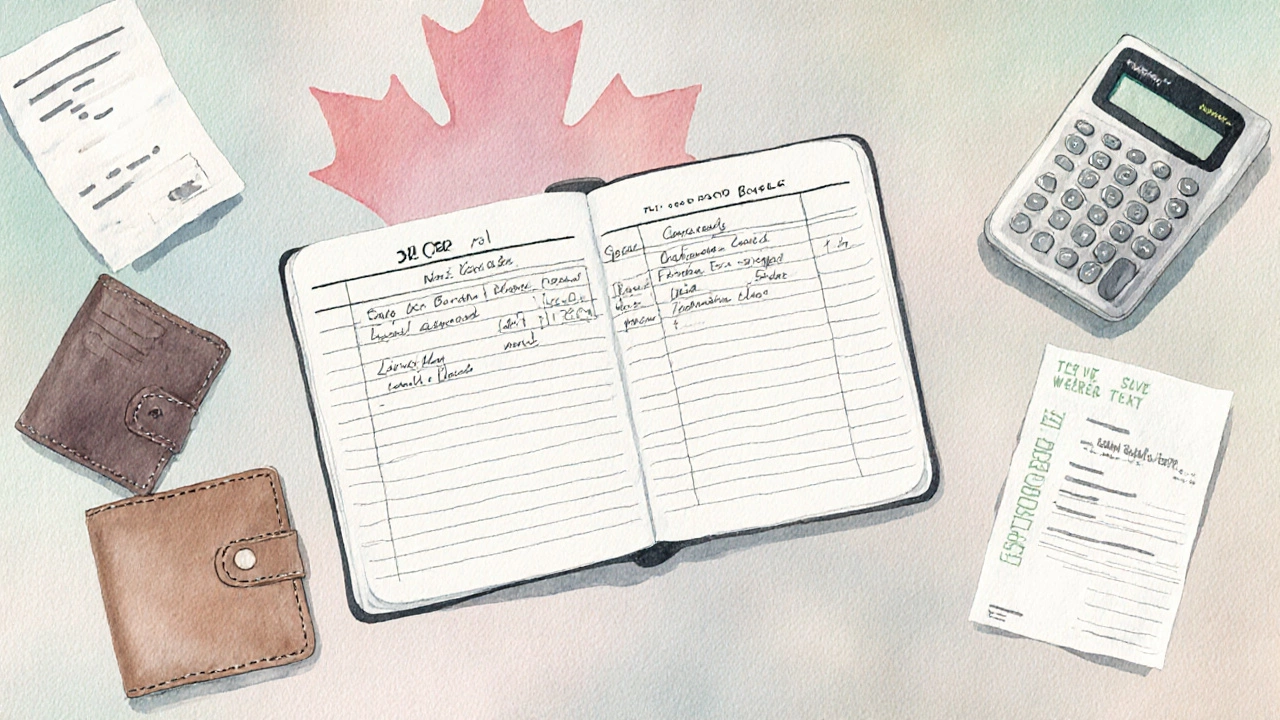Crypto Investment Amount for Beginners: How Much Should You Invest?
 Oct, 17 2025
Oct, 17 2025
Crypto Investment Calculator
Based on the article's recommended 5% rule for crypto beginners, calculate your ideal investment amount. This tool helps you determine how much of your investable assets you should allocate to cryptocurrency.
Recommended Crypto Investment
5% RuleBased on your $ investable assets:
$
This aligns with the article's recommendation of investing no more than 5% of your total portfolio.
When you first hear about Cryptocurrency a digital asset class that uses blockchain technology to record transactions, it’s easy to wonder how much of your hard‑earned money you should actually put into it. The answer isn’t a one‑size‑fits‑all number; it’s a balanced approach that respects your financial situation, risk tolerance, and long‑term goals.
1. Gauge Your Personal Risk Tolerance
Before you think about dollars or cents, ask yourself how you’d react if the value of your crypto holdings dropped 30% overnight. If you’d panic and sell everything, you probably have a low risk tolerance. If you can stay calm, see it as a buying opportunity, and keep the money invested, you’re in a better position to allocate a larger slice of your portfolio.
Most financial planners suggest that new investors allocate no more than 5% of their total investable assets to high‑volatility categories like crypto. This figure protects you from severe losses while still giving you exposure to potential upside.
2. Define Your Investable Assets
Identify the money you can truly afford to lose. Exclude emergency funds, short‑term savings, and any debt repayment obligations. For example, if you have $20,000 in liquid savings, $10,000 earmarked for a down‑payment in two years, and $5,000 in high‑interest credit‑card debt, your true investable pool might only be $5,000.
Apply the 5% rule to that $5,000 - you’d start with $250. That may sound modest, but it’s a sensible foothold that lets you learn without jeopardizing your financial health.
3. Choose the Right Cryptocurrencies
Not all crypto assets are created equal. Bitcoin the original cryptocurrency, often seen as digital gold and Ethereum a programmable blockchain that powers DeFi and NFTs dominate market cap and have the deepest liquidity. Starting with these two can reduce some of the risks associated with obscure Altcoins alternative cryptocurrencies that differ from Bitcoin.
If you feel comfortable after a few months, you can allocate a small portion (e.g., 10‑15% of your crypto budget) to promising altcoins, but always do your own research.

4. Decide How to Deploy Your Money
There are two common approaches: a lump‑sum purchase or a systematic plan like Dollar-Cost Averaging investing a fixed amount at regular intervals regardless of price. Below is a quick comparison.
| Factor | Lump‑Sum | Dollar‑Cost Averaging |
|---|---|---|
| Initial Commitment | All at once | Small, recurring amounts |
| Emotional Impact | High - market swings felt immediately | Low - spreads risk over time |
| Potential Returns | Higher if bought at a low point | More consistent, reduces timing risk |
| Complexity | Simple setup | Needs automation or calendar reminders |
For most beginners, Dollar‑Cost Averaging aligns better with the 5% rule because you can start with as little as $25‑$50 each week, staying within your comfort zone.
5. Manage Volatility and Keep Perspective
Crypto markets can swing wildly in a single day. To avoid knee‑jerk reactions, set clear stop‑loss or profit‑target levels. Some investors keep a "crypto‑only" ledger where they record entry price, target exit price, and the date of each purchase. Reviewing this ledger weekly helps you stay disciplined.
Remember that crypto should complement, not replace, traditional assets. Maintaining strong Portfolio Diversification spreading investments across different asset classes to reduce risk is essential. A balanced blend might look like 60% equities, 30% bonds, and 10% alternative assets-including the modest crypto slice.
6. Stay Informed About Canadian Regulation and Tax
Canada treats crypto as a commodity for tax purposes. Capital gains on the sale of crypto are taxable, and you need to report them on your annual return. Keep records of every purchase, sale, and exchange (including trades between crypto assets). Using a simple spreadsheet or a dedicated crypto‑tax app can save you headaches later.
Additionally, be aware of the Canadian Regulation rules set by the Canada Revenue Agency and securities authorities that affect crypto activities. Registering with a reputable, regulated exchange (e.g., Binance Canada, Kraken, or Coinbase) helps ensure your funds are protected and your tax reporting stays clean.

7. Common Pitfalls and How to Avoid Them
- Chasing hype: Jumping into a token because it’s trending on social media can lead to loss. Stick to assets you understand.
- Over‑allocating early: Investing more than the 5% rule before you have a track record can jeopardize your finances.
- Neglecting security: Use hardware wallets or reputable software wallets with two‑factor authentication.
- Ignoring fees: Transaction fees can erode small balances. Choose exchanges with low fees for beginners.
8. Quick Start Checklist for New Crypto Investors
- Calculate your total investable assets.
- Apply the 5% rule to determine your crypto budget.
- Open an account on a regulated Canadian exchange.
- Start with Bitcoin and/or Ethereum using Dollar‑Cost Averaging.
- Document every transaction for tax purposes.
- Review your holdings monthly and adjust if your risk tolerance changes.
Following this systematic approach lets you dip your toes into crypto without sinking your financial boat. As you gain experience, you can gradually increase the allocation-always remembering that the goal is long‑term growth, not quick riches.
Frequently Asked Questions
What is a safe percentage of my portfolio to allocate to crypto?
Most experts recommend keeping crypto to no more than 5% of your total investable assets, especially when you’re just starting out.
Should I buy Bitcoin or Ethereum first?
Both are solid choices. Bitcoin acts like digital gold, while Ethereum offers smart‑contract functionality. Many beginners split their initial budget evenly between the two.
Is Dollar‑Cost Averaging better than buying all at once?
For most beginners, Dollar‑Cost Averaging reduces the emotional impact of volatility and spreads entry risk over time.
Do I need to pay taxes on crypto profits in Canada?
Yes. The CRA treats crypto gains as taxable capital gains. Keep detailed records of every purchase, sale, and trade.
Can I start with less than $100?
Absolutely. Many exchanges let you buy fractions of Bitcoin or Ethereum for as little as $10‑$20, perfect for a Dollar‑Cost Averaging plan.
